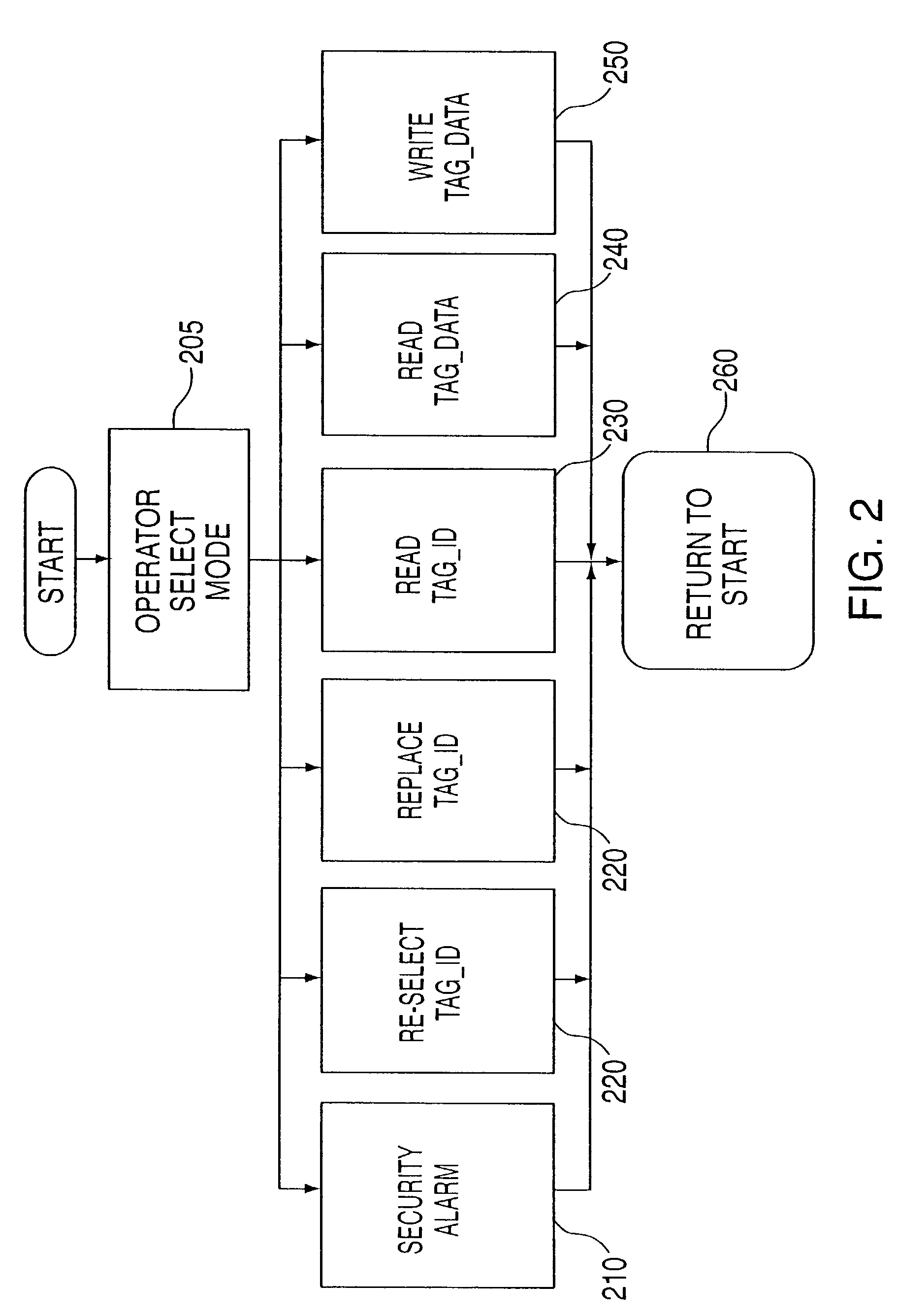Method and system for communicating with and tracking RFID transponders
a technology for transponders and transmitters, applied in the field of methods and systems for communicating with and tracking rfid transponders, can solve the problems of affecting the transmission of messages, affecting the overall transponder population, so as to achieve good estimates of the total transponder population
- Summary
- Abstract
- Description
- Claims
- Application Information
AI Technical Summary
Benefits of technology
Problems solved by technology
Method used
Image
Examples
Embodiment Construction
[0043]The present invention is a system and method by which information is written to or read from as many as several thousand arbitrarily located transponders in a spatial range extending to 20 feet or more from each of a plurality of interrogators using radio communications. The present invention provides for the efficient and reliable location and control of very large numbers of transponders, based upon a particular communication protocol and utilizes radar direct sequence range gating and Time Division Multiple Access (TDMA) communications methods. The use of TDMA provides an improvement over the prior art in several ways, including but not limited to: (1) TDMA separates the timing of all responding transponders into discrete intervals (i.e., time slots) such that partial collisions are avoided; and (2) TDMA permits a multiplicity of transponders to be read in each interrogator frame (the collection of time slots comprising the interrogator command time slot and the plurality o...
PUM
 Login to View More
Login to View More Abstract
Description
Claims
Application Information
 Login to View More
Login to View More - R&D
- Intellectual Property
- Life Sciences
- Materials
- Tech Scout
- Unparalleled Data Quality
- Higher Quality Content
- 60% Fewer Hallucinations
Browse by: Latest US Patents, China's latest patents, Technical Efficacy Thesaurus, Application Domain, Technology Topic, Popular Technical Reports.
© 2025 PatSnap. All rights reserved.Legal|Privacy policy|Modern Slavery Act Transparency Statement|Sitemap|About US| Contact US: help@patsnap.com



